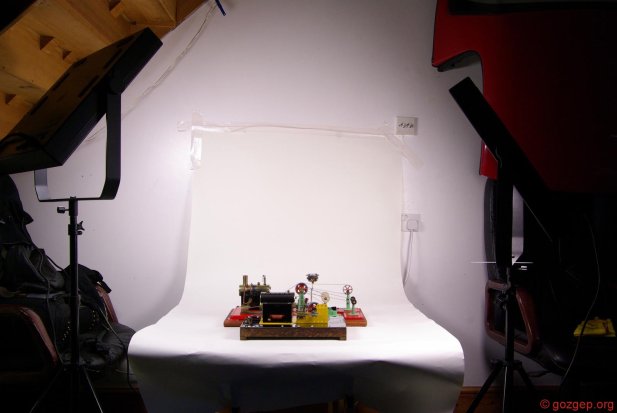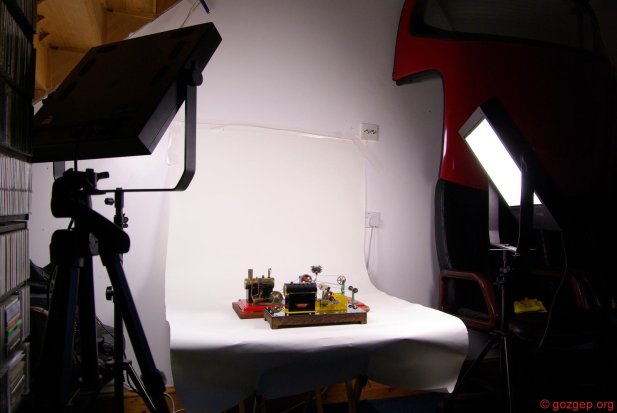The first trick is to get a reasonably good, plain backdrop. We used a left over strip of photo backdrop paper, roughly 1.5 x 2.5 metres. This stuff is made by Coloroll and comes in 11 metres long x 2.72 metres wide rolls – looks like a giant toilet roll! For a full-length human shoot, one needs enough paper to reach from the ceiling, down to the floor, and along a bit.
Therefore, the last 2.5 to 3 metres or so on any roll are useless anyway because it will barely even touch the floor. So, instead of binning it, we use it for shooting small items. We literally cut up what we need, stick it on a wall with gaffer tape, and drape it over a table – with the other end held in place with large bulldog clips. Our mini studio ain’t a pretty sight. A fact to which the following picture will bear testament:-
The next trick is not to use flash. Taking pics of small shiny things, even in a light box, is very tricky with flash because it is hard to predict exactly where the light will end up. So instead, we use a pair of permanently-lit, Courtenay Paterson “Digilites”. These are basically plastic boxes roughly 500 mm x 500 mm x 80 mm deep, mounted on standard Paterson light stands.
They are literally stuffed full of so-called “daylight” fluorescent tubes, connecting wires and tin plate. Light is emitted on the subject via a white, frosted, perspex front panel, criss-crossed with magenta strips – supposedly to correct minor colour balance errors. They’re quite cheap too. I think we paid about £130 for the pair, second hand, a few years back.
They’re not as bright as studio flash, so one has to make compromises on the camera. Shooting at a distance that varies between about 0.6 & 1.5 metres, requires camera settings of F8 @ 1/30 second shutter speed, with a film speed of 400(ASA)|27°(DIN).
This means that you need to hold the camera quite still (or on a tripod), the depth of field is not particularly great and even with a reasonably decent (D)SLR (Pentax K10D) you are right on the edge so far as acceptable grain is concerned. And you need to set the camera colour balance manually since they are not real daylight!
[return to FAQ]


